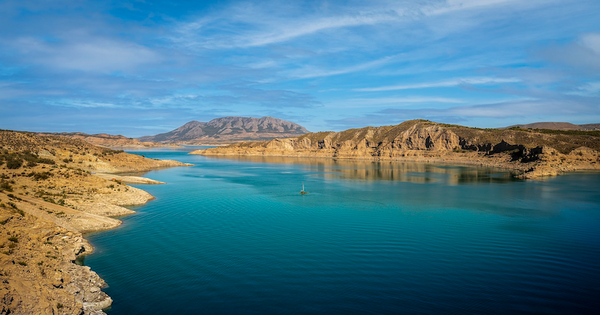Global reservoirs have become increasingly empty over the last two decades, despite an increase in total storage capacity due to the construction of new reservoirs. Researchers used satellite data and a novel approach to estimate the storage variations of 7,245 global reservoirs from 1999 to 2018.
Water is a necessary and indispensable component of human existence. Water demand increases as the global population grows and the climate warms. Global reservoirs have become increasingly empty over the last two decades, despite an increase in total storage capacity due to the construction of new reservoirs.
Led by Dr. Huilin Gao, associate professor in the Zachry Department of Civil and Environmental Engineering at Texas A&M University, researchers used a new approach with satellite data to estimate the storage variations of 7,245 global reservoirs from 1999 to 2018.
The researchers published their findings in Nature Communications.
As the world’s population continues to grow in the twenty-first century, surface water reservoirs are increasingly being relied on to meet rising demands in the context of a changing climate. However, the amount of water available in reservoirs and its trends have not been well quantified on a global scale.
Dr. Huilin Gao
Global reservoir storage increased at a rate of 28 cubic kilometres per year, owing to the construction of new reservoirs. Despite these efforts, data show that the rate of reservoir filling is slower than expected.
“As the world’s population continues to grow in the twenty-first century,” Gao explained, “surface water reservoirs are increasingly being relied on to meet rising demands in the context of a changing climate. However, the amount of water available in reservoirs and its trends have not been well quantified on a global scale.”
The researchers created the Global Reservoir Storage dataset, which is freely available online to decision-makers and the broader scientific community. It is a significant step forward in tracking global reservoir storage conditions.

Given the projected decrease in water runoff and rising water demand, the observed trend of diminishing storage returns from reservoir construction is expected to continue, potentially affecting water supplies with serious consequences. These findings suggest that meeting future water demands cannot be met solely by building new reservoirs, highlighting the need for novel management strategies.
“Through this research, we share a new perspective for reevaluating the socio-economic benefits of new reservoir construction and the tension between increasing water demand and decreasing water availability in developing countries,” said Dr. Yao Li, a former Texas A&M postdoctoral researcher who is now a professor at Southwest University’s School of Geographical Sciences.
The decline in reservoir storage is most visible in the global south, which includes South Asia, Africa, and South America. Despite efforts to build new reservoirs, data show that they fall short of the filling levels expected. The greatest drop is in South America and Africa, where growing populations contribute to increased water demand.
In contrast, reservoirs in the global north, including regions in North America and Europe, are reaching their maximum capacity at a faster rate. Reservoirs in high-latitude regions, such as the Great Lakes and Siberia, have higher storage capacities, owing to lower population densities and less impact from human activities.
Because the sedimentation process was not considered in the analysis, the overall storage decline presented in this study is conservative.
















